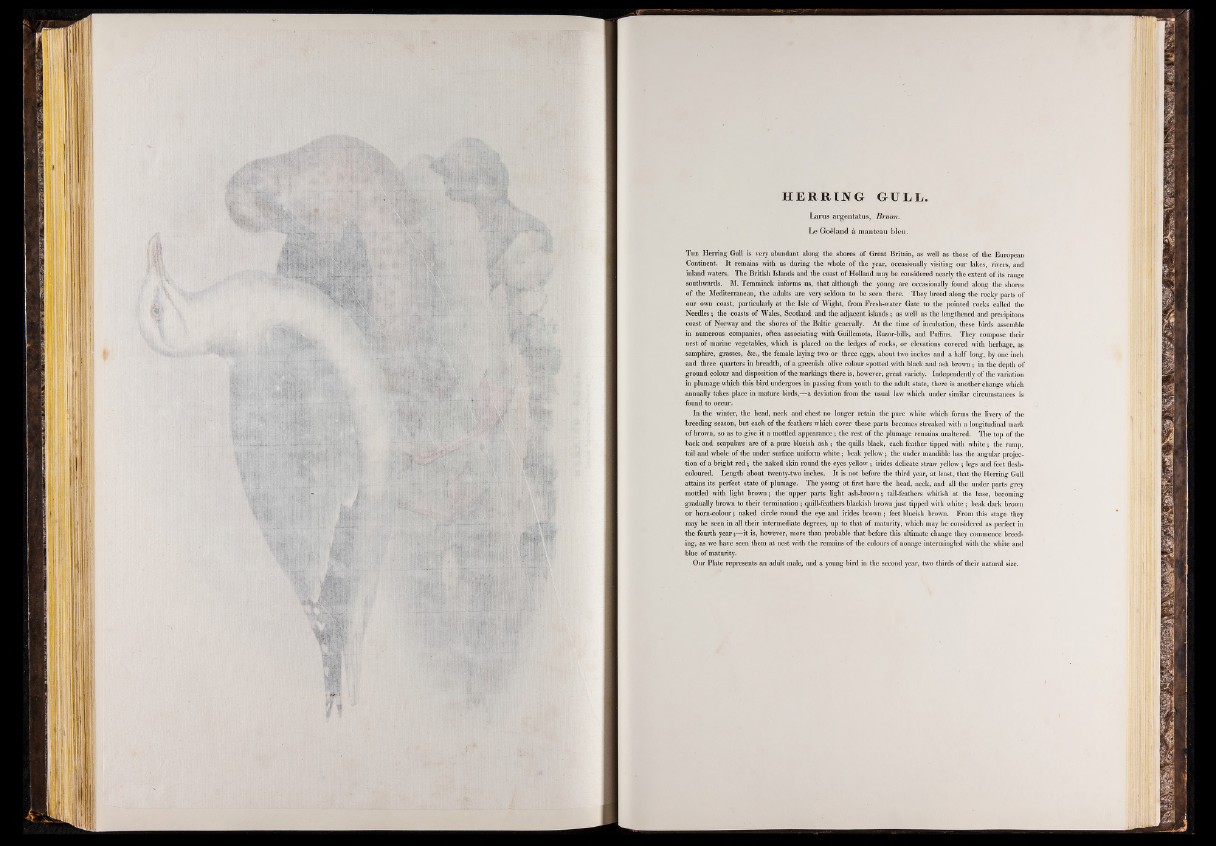
It
SB
Larus argentatus, Brunn.
Le Goéland à manteau bleu.
T he Herring Gull is very abundant along the shores of Great Britain, as well as those of the European
Continent. It remains with us during the whole of the year, occasionally visiting our lakes, rivers, and
inland waters. The British Islands and the coast of Holland may be considered nearly the extent of its range
southwards. M. Temminck informs us, that although the young are occasionally found along the shores
of the Mediterranean, the adults are very seldom to be seen there. They breed along the rocky parts of
our own coast, particularly at the Isle of Wight, from Fresh-water Gate to the pointed rocks called the
Needles ; the coasts of Wales, Scotland and the adjacent islands ; as well as the lengthened and precipitous
coast of Norway and the shores of the Baltic generally. At the time of incubation, these birds assemble
in numerous companies, often associating with Guillemots, Razor-bills, and Puffins. They compose their
nest of marine vegetables, which is placed on the ledges of rocks, of elevations covered with herbage, as
samphire, grasses, &c., the female laying two or three eggs, about two inches and a half long, by one inch
and three quarters in breadth, of a greenish olive colour spotted with black and ash brown ; in the depth of
ground colour and disposition of the markings there is, however, great variety. Independently of the variation
in plumage which this bird undergoes in passing from youth to the adult state, there is another change which
annually takes place in mature birds,—a deviation from the usual law which under similar circumstances is
found to occur.
In the winter, the head, neck and chest no longer retain the pure white which forms the livery of the
breeding season, but each of the feathers which cover these parts becomes’streaked with a longitudinal mark
of brown, so as to give it a mottled appearance ; the rest of the plumage remains unaltered. The top of the
back and scapulars are of a pure blueish ash ; the quills black, each feather tipped with white ; the rump,
tail and whole of the under surface uniform white ; beak yellow ; the under mandible has the angular projection
o f a bright red ; the naked skin round the eyes yellow ; irides delicate straw yellow ; legs and feet flesh-
coloured. Length about twenty-two inches. It is not before the third year, at least, that the Herring Gull
attains its perfect state of plumage. The young at first have the head, neck, and all the under parts grey
mottled with light brown; the upper parts light ash-brown; tail-feathers whitish at the base, becoming
gradually brown to their termination ; quill-feathers blackish brown just tipped with white ; beak dark brown
or horn-colour ; naked circle round the eye and irides brown ; feet blueish brown. From this stage they
may be seen in all their intermediate degrees, up to that of maturity, which may be considered as perfect in
the fourth year ;—it is, however, more than probable that before this ultimate change they commence breeding,
as we have seen them at nest with the remains o f the colours of nonage intermingled with the white and
blue of maturity.
Our Plate represents an adult male, and a young bird in the second year, two thirds of their natural size.